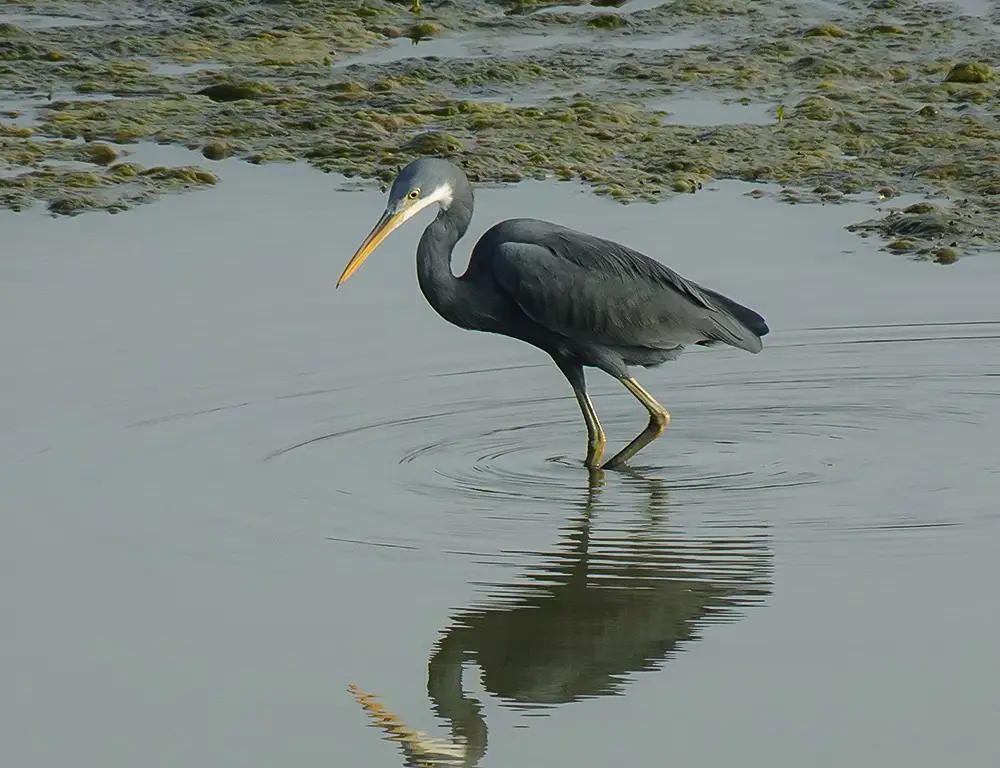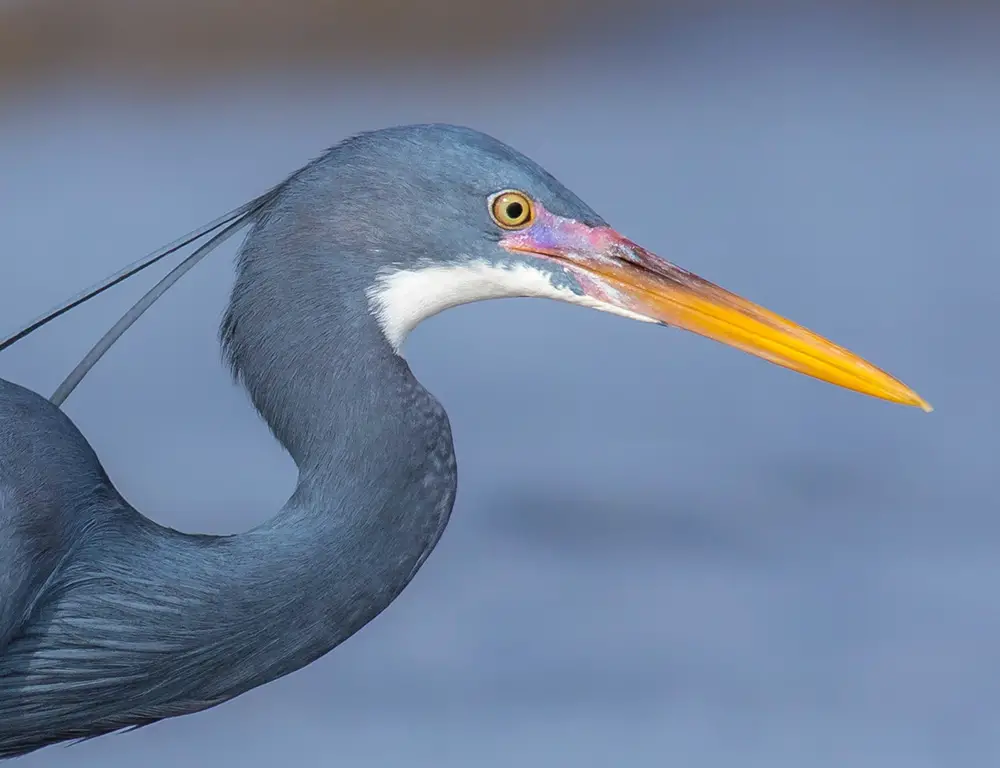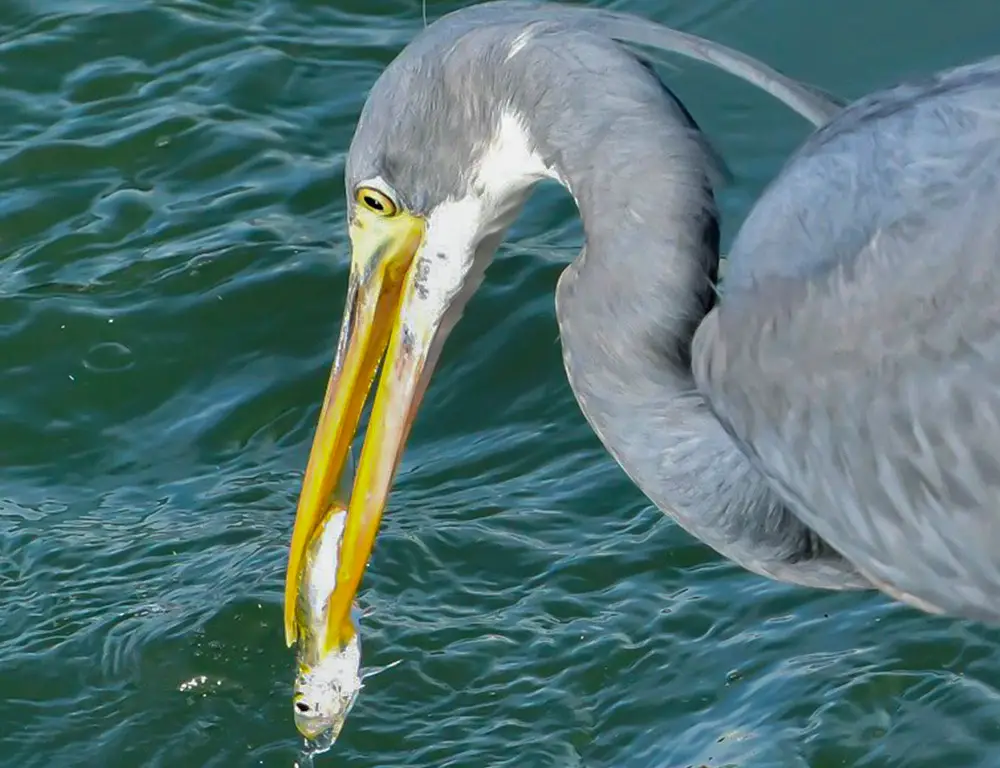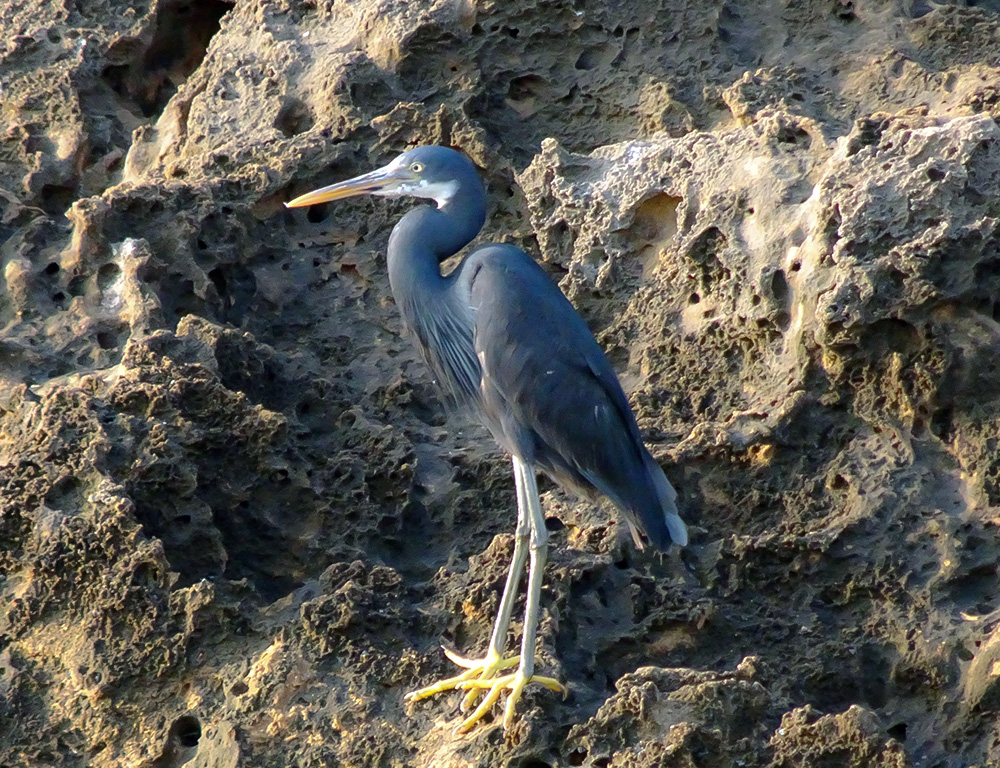The Western Reef Heron, also recognized as the Western Egret, captivates observers with its stunning plumage ranging from slate grey to pure white.
Thriving primarily in coastal regions, this species has remarkable adaptability to saltwater and freshwater habitats.
Beyond its striking appearance, the Western Reef Heron exhibits intriguing behavioral patterns, particularly during breeding seasons, marked by territorial solid instincts and unique courtship displays.
Concentrated in population clusters along Africa’s western coastline and parts of South Asia, these herons are iconic symbols of regional biodiversity.
Playing a pivotal role in maintaining ecosystem balance by controlling pest populations, their adaptability to environmental changes makes them compelling subjects for wildlife enthusiasts and researchers.

Physical Characteristics of Western Reef Heron
The Western Reef Heron (Egretta gularis) possesses several distinctive physical characteristics that contribute to its unique appearance and adaptation to its coastal habitat.
Here are some notable features:
Plumage
The plumage of the Western Reef Heron can vary significantly between individuals and across different stages of its life cycle. Generally, it exhibits two main color morphs:
- Dark Morph: Individuals with dark grey-blue plumage, particularly noticeable on the upperparts, wings, and back. This coloration provides effective camouflage in rocky coastal habitats.
- Light Morph: Individuals with pure white plumage, which is more common in sandy or marshy coastal areas. This coloration aids in blending with lighter surroundings.
Size
Western Reef Herons are medium-sized, with adults typically measuring around 55-65 centimeters (21-26 inches) in length. They have a wingspan ranging from 90 to 105 centimeters (35 to 41 inches).
Body Structure
These herons have a slender body with long legs and a long, S-shaped neck, which they use for wading in shallow waters while hunting. Their bodies are streamlined for efficient movement through water.
Bill
The bill of the Western Reef Heron is long, slender, and slightly curved downwards, ideal for capturing fish and other aquatic prey. During the breeding season, males may exhibit attractive blue lores, the area between the eye and bill, as part of their courtship displays.
Legs and Feet
Their legs are long and thin, adapted for wading in shallow waters without getting their bodies wet. The feet are equipped with long, flexible toes that aid in walking on uneven surfaces and gripping prey.
Eyes

Western Reef Herons have keen eyesight, crucial for detecting movement and spotting potential prey while hunting in murky waters. Their binocular vision provides excellent depth perception, aiding in accurate strikes at underwater prey.
Overall Appearance
When observed in their natural habitat, Western Reef Herons appear graceful and agile, with a characteristic stance while wading or standing still. Their contrasting plumage, sleek body, and poised posture make them striking and recognizable coastal birds.
Diet and Feeding Habits of the Western Reef Heron
The Western Reef Heron (Egretta gularis) is an opportunistic feeder with a diverse diet, primarily consisting of aquatic prey in coastal habitats.
Here’s an overview of their diet and feeding habits:
Diverse Palate
Western Reef Herons are not picky eaters but opportunistic feeders, taking advantage of the prey in their coastal habitats.
Primary Diet Components
- Fish (60%): Fish comprise most of the Western Reef Heron’s diet. These herons are skilled hunters, often observed wading in shallow waters and patiently waiting for fish to approach before striking swiftly.
- Crustaceans (30%): Crustaceans such as crabs and shrimp are another significant component of their diet. Western Reef Herons are adept at foraging for crustaceans in intertidal zones and muddy substrates.
- Other Prey (10%): The remaining portion of their diet consists of small insects and occasionally mollusks. While less common than fish and crustaceans, these prey items supplement their diet, mainly when other food sources are scarce.
Feeding Techniques

- Foot Stirring: Western Reef Herons employ a feeding technique called “foot stirring,” where they disturb underwater vegetation with their feet to scare out hidden prey. This strategy demonstrates their intelligence and adaptability in locating and capturing prey.
- Feeding Times: Western Reef Herons do not adhere to a strict feeding schedule, and tidal patterns influence their activity.
They are most active during low tide when pools form in coral reefs or mangrove swamps, providing ideal hunting grounds.
However, they will opportunistically feed whenever prey is available, regardless of the time of day or night.
Adaptation to Coastal Environment
Studying the dietary habits of Western Reef Herons provides valuable insights into how they have adapted to their coastal environment.
Their ability to exploit various prey resources and employ effective hunting techniques reflects their adaptability and survival skills in dynamic coastal ecosystems.
Habitat and Distribution: Where Does the Western Reef Heron Live?
The Western Reef Heron (Egretta gularis) is predominantly found in coastal regions spanning parts of Africa and Asia. Here’s an overview of its habitat and distribution:
Geographic Range
Western Reef Herons are primarily found along the coastlines of Africa and Asia. Their range extends from Senegal in West Africa along the Atlantic coast to India’s western coastline, including regions such as the Arabian Sea.
Habitat Preferences
These herons inhabit diverse coastal environments characterized by shallow water bodies and abundant prey resources. They are commonly found in various habitats, including:
- Mangroves: Western Reef Herons frequent mangrove swamps, utilizing the tangled roots and shallow waters as foraging grounds.
- Estuaries: They are often observed in estuarine habitats, where freshwater rivers meet the ocean’s saltwater, creating a rich and diverse ecosystem.
- Lagoons and Tidal Flats: Shallow coastal lagoons and tidal flats provide ideal feeding areas for Western Reef Herons, offering ample opportunities to hunt for fish and crustaceans.
- Sandy or Rocky Coastlines: These herons are adaptable to sandy or rocky coastlines, where they may nest and roost on cliffs, rocky outcrops, or sandy beaches.
Adaptation to Human-altered Environments
Western Reef Herons have adapted well to human-altered environments and can be found in urban areas such as harbor areas and fish markets. They take advantage of human activities that provide easy access to food resources, including discarded fish scraps.
Seasonal Variation
The distribution of Western Reef Herons may vary seasonally, influenced by climate and food availability. During breeding seasons, typically between April and June, they tend to flock closer to coastal regions offering suitable nesting sites.
Hotspots
Specific locations are hotspots for sighting Western Reef Herons, where large colonies or significant populations are frequently observed. Examples include the Saloum Delta National Park in Senegal and the Sundarbans National Park in Bangladesh.
Adaptations: How the Western Reef Heron Thrives in Its Environment

The Western Reef Heron (Egretta gularis) has evolved several remarkable adaptations that enable it to thrive in its dynamic coastal environment.
Let’s delve deeper into these adaptations:
Plumage Variation
The Western Reef Heron exhibits two distinct color morphs: dark grey-blue and pure white. This variation in plumage coloration allows individuals to blend effectively into different coastal backgrounds.
Darker plumaged herons camouflage well in rocky coastal habitats, while lighter colored individuals are better suited for sandy or marshy areas.
Feeding Techniques
- Foot Stirring: Western Reef Herons employ foot stirring, a feeding technique that uses one foot to disturb shallow water or underwater vegetation, flushing out hidden prey.
- Wing Flicking: By creating shade over the water with their wings, herons attract fish seeking shelter from the sunlight, making them easier to catch.
- Neck Lashing: These herons use rapid strikes with sharp bills to capture prey detected visually, showcasing their hunting prowess and adaptability to different hunting situations.
Physical Adaptations
- Long Legs: Western Reef Herons have long, slender legs adapted for wading through shallow waters while keeping their bodies dry. This enables them to move stealthily and navigate diverse coastal habitats.
- Elongated Neck: Their elongated necks allow them to reach underwater prey without fully submerging themselves, minimizing disturbance and maximizing efficiency while hunting.
- Supreme Eyesight: Western Reef Herons possess keen eyesight, allowing them to spot tiny movements of potential prey even in turbulent waters.
Their binocular vision provides excellent depth perception, essential for accurately striking at small prey underwater.
Behavioral Adaptations
Western Reef Herons exhibit territorial behavior during breeding seasons and perform elaborate courtship displays to attract mates. They are opportunistic feeders, taking advantage of tidal patterns and prey availability to maximize their foraging success.
Conclusion: The Importance of Conserving the Western Reef Heron
The Western Reef Heron, native to coastal regions of western Africa and Asia, plays a crucial role in ecosystem balance. However, its population decline due to habitat destruction and pollution demands urgent conservation action.
These herons maintain local food chains by controlling aquatic organism populations, preventing unforeseen disruptions. Conservation efforts must focus on habitat preservation and reducing pollution alongside public awareness campaigns.
We must recognize our responsibility to preserve biodiversity, including the Western Reef Heron.
Through collective action, we can ensure the continued existence of this fascinating species, contributing to Earth’s vibrant ecosystem and safeguarding the intricate web of life on our planet.